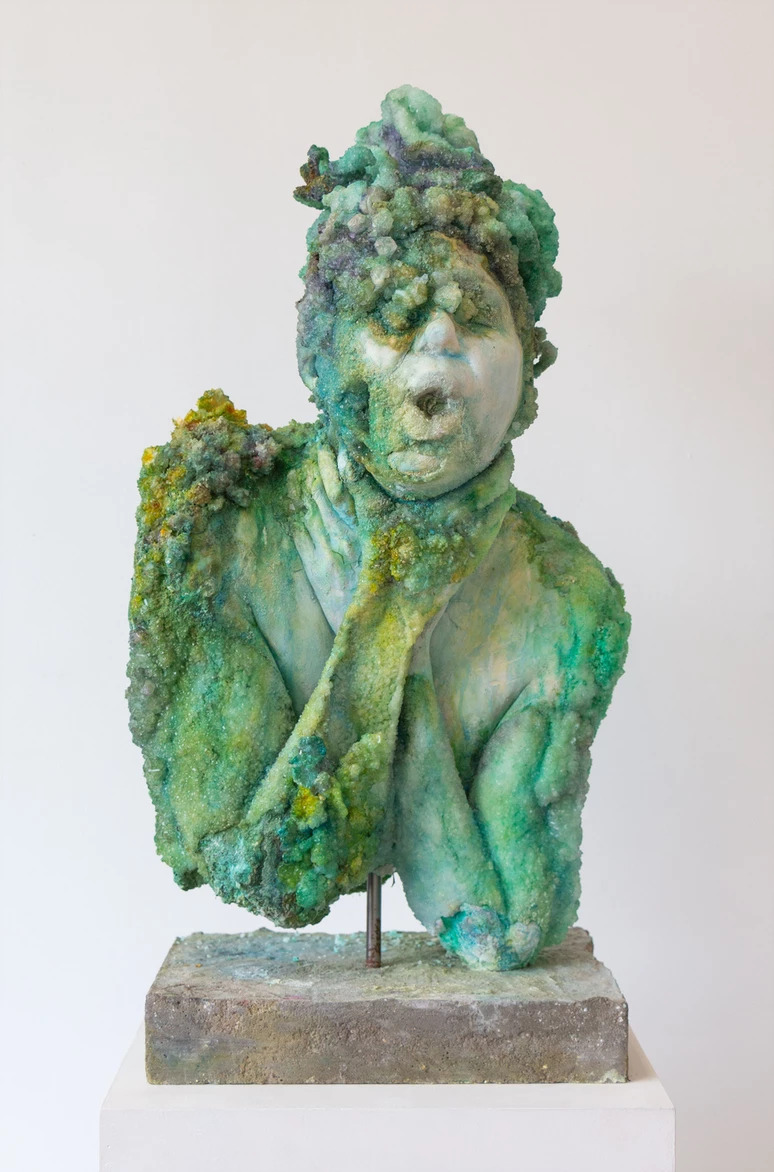
Elizabeth Alexander uses classically “domestic” materials to explore femininity, domesticity, and class. Some of her largest sculptures come from handcut wallpaper, but the artist also uses porcelain teacups, pictures from coffee table books, and other goods in her creations. The artist says that “obsession, fanaticism, repetition, and process are both my muse and method.”



“Channeling neurosis and anxiety into busywork, menial tasks, and fussing over trivial duties I am caught in a cycle of reinvention and repair,” Alexander says. “I am a domestic archeologist in pursuit of good taste. Performing an ongoing process of deconstruction and reconstruction I search for relics of the American Dream through acts of concealment and reveal. Exaggerated demonstrations of taste are processed to defy a piecemeal narrative of hierarchical society and the yardsticks used to rank one another.”



Alexander’s currently showing at Hodges Taylor in Charlotte, N.C. “I May Not Be A Lion” runs through June 18.



 Pittsburgh based artist
Pittsburgh based artist  Of all the creatures on the planet, perhaps no other has inspired us quite like birds; they are strong, light, beautiful, and have the freedom to go anywhere they want to go. Birds have long inspired artist Tom Hill's mixed media sculptures made of carved wood, forged copper, and steel. The birds that he builds are characterizations of real species like owls and and black birds, capturing their natural personalities in a playful, even cartoonish way. He gives them big, rounded and expressive eyes, delicate feathers spun out of hardy wires, and long, spindly legs. "I tend to think of all my pieces as character studies. Spend a few seconds observing a bird; the turn of the head, the flash of an eye, puffed up feathers; each gesture conveys a wealth of visual material for the artist as we see the bird consider and interact intelligently with the world around it," he says.
Of all the creatures on the planet, perhaps no other has inspired us quite like birds; they are strong, light, beautiful, and have the freedom to go anywhere they want to go. Birds have long inspired artist Tom Hill's mixed media sculptures made of carved wood, forged copper, and steel. The birds that he builds are characterizations of real species like owls and and black birds, capturing their natural personalities in a playful, even cartoonish way. He gives them big, rounded and expressive eyes, delicate feathers spun out of hardy wires, and long, spindly legs. "I tend to think of all my pieces as character studies. Spend a few seconds observing a bird; the turn of the head, the flash of an eye, puffed up feathers; each gesture conveys a wealth of visual material for the artist as we see the bird consider and interact intelligently with the world around it," he says. Nathan French, a fashion designer-turned-fine artist, crafts captivating and unsettling sculptures crystals, feathers, wax, and other unexpected materials. The artist, who appears in the upcoming Park Park Studios group show "Wasteland,” had previously created wearable art in his previous career. And in fine art, threads from that training endure.
Nathan French, a fashion designer-turned-fine artist, crafts captivating and unsettling sculptures crystals, feathers, wax, and other unexpected materials. The artist, who appears in the upcoming Park Park Studios group show "Wasteland,” had previously created wearable art in his previous career. And in fine art, threads from that training endure.